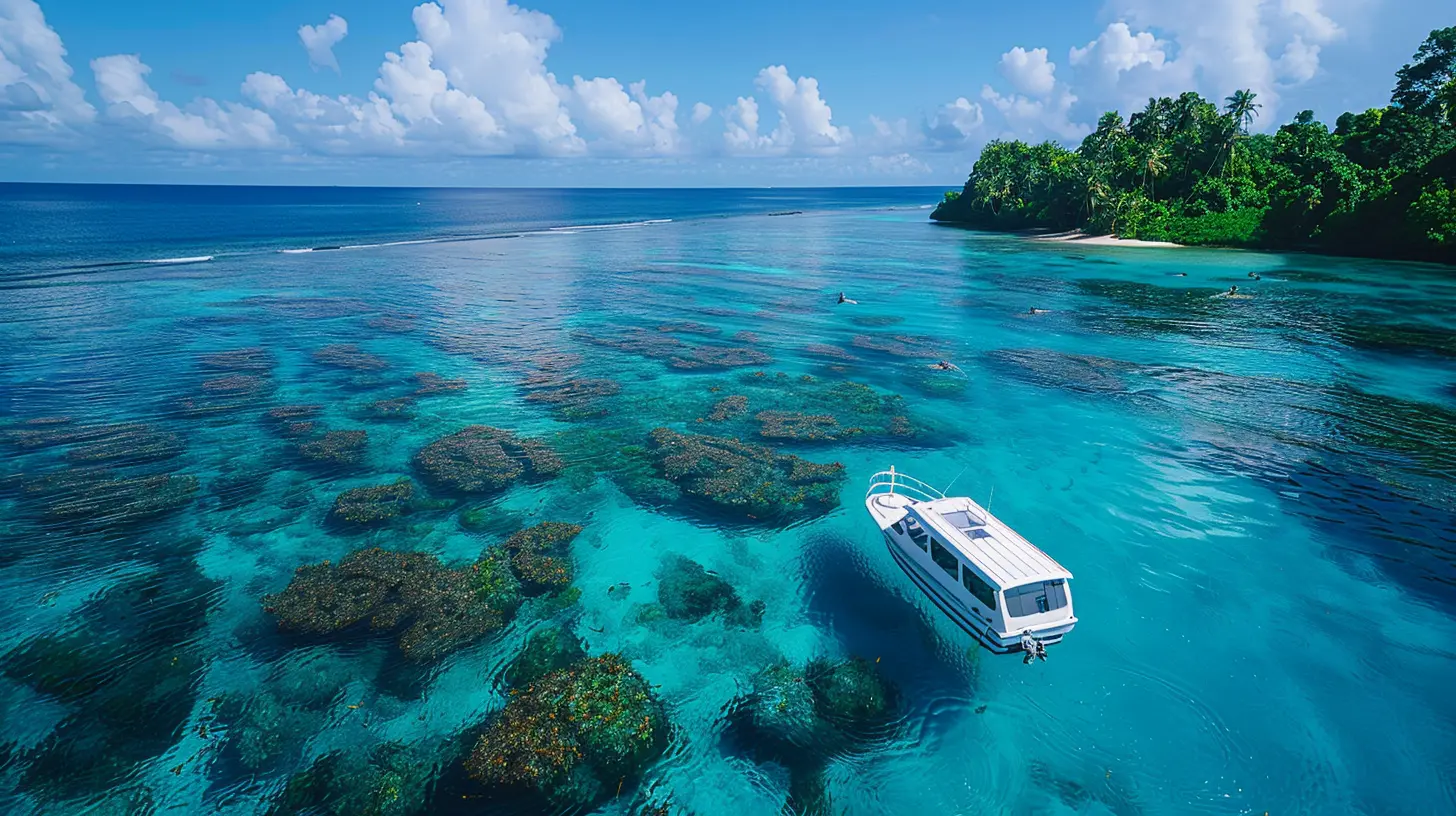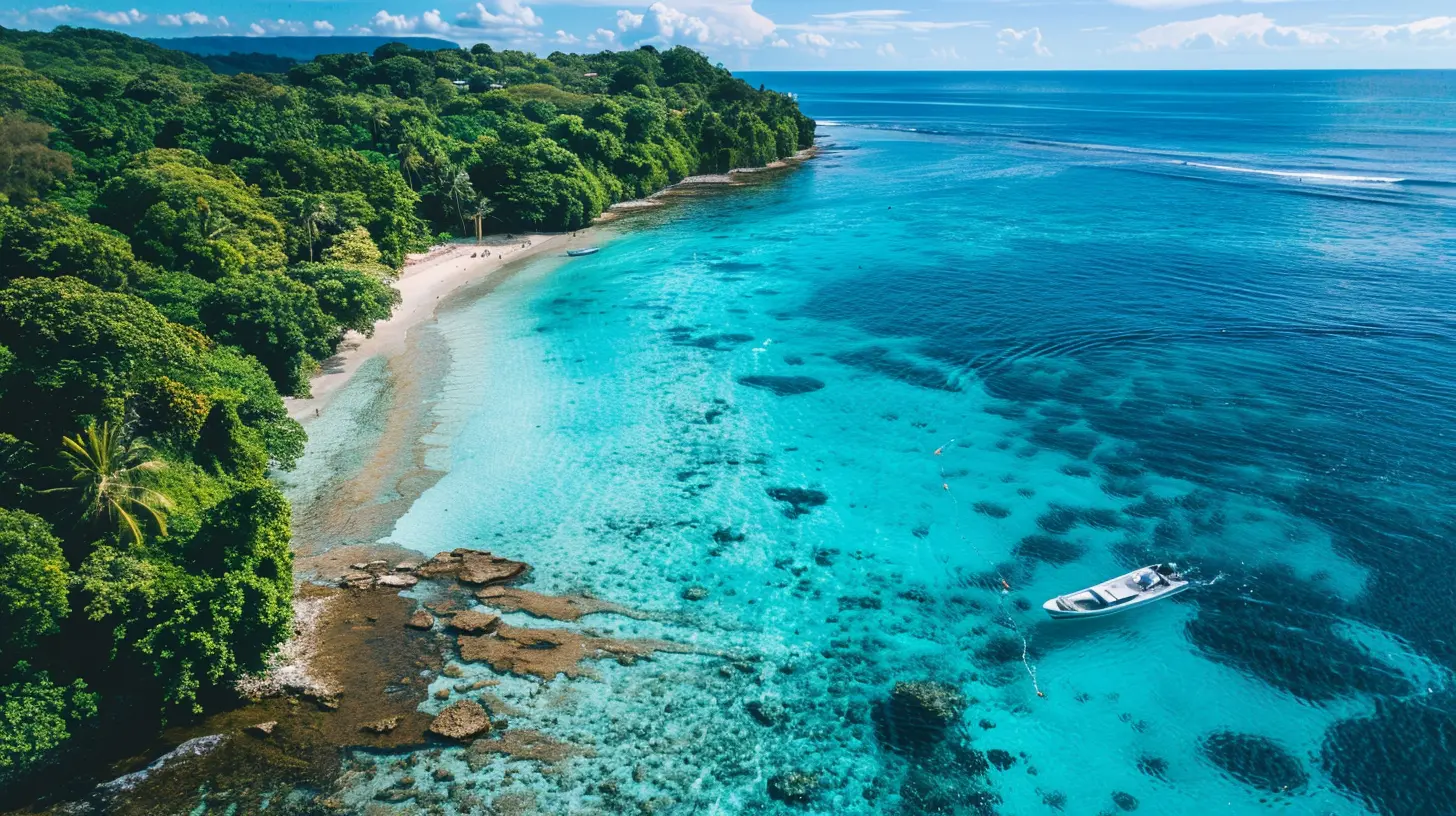Whale Watching Season in Tonga: Everything You Need to Know
18 November 2025
If you're looking for a truly wild and unforgettable adventure, buckle up—because we’re diving deep into one of the planet’s most raw and magical experiences: whale watching in Tonga. Picture this: warm South Pacific waters, unspoiled island life, and the chance to swim alongside giants. Yeah, that’s Tonga for you.
Whether you’re a die-hard wildlife lover, a photographer chasing “the” shot, or just someone looking to cross “swim with humpback whales” off their bucket list, you’ve hit the jackpot. Let’s break it down and give you everything you need to know about whale watching season in Tonga—no fluff, no filler, just epic travel insight.
🐋 Why Is Tonga So Famous for Whale Watching?
Because it’s one of the FEW places in the world where you can legally swim with humpback whales in their natural habitat. No cages, no gimmicks—just you, some fins, and a whole lot of awe.Every year, from July to October, hundreds of humpback whales travel thousands of miles from Antarctica to the warm, shallow waters surrounding the islands of Tonga. Why? To mate, give birth, and nurse their calves. Think of it as a tropical maternity ward—for whales.
Tonga offers a front-row seat to this miracle of nature. And the best part? The Tongan government puts serious effort into protecting these magnificent creatures, so the experience is not just thrilling—it’s ethical.
📅 When Is Whale Watching Season in Tonga?
Let’s cut to the chase. The official whale watching season in Tonga runs from mid-July through October, with the peak being August and September. That’s when whales are most active and sightings are almost guaranteed.Here’s a quick month-by-month breakdown:
| Month | Whale Activity |
|-------------|---------------------------------------------------------------|
| July | Whales start arriving, fewer crowds, great for early birds |
| August | Prime time—tons of whale action, best chance to swim with calves |
| September | Still peak season, warm water, fantastic visibility and weather |
| October | Season winds down, fewer tourists, intimate encounters still possible |
Want fewer tourists and a more personal experience? Shoot for early July or late October. Want to be in the thick of the action? Go for mid-August. Just remember: the whales set the schedule, not us.
📍 Best Places in Tonga for Whale Watching
Okay, Tonga isn’t just one island—it's a group of 170+ islands, though only a few are inhabited. So where should you go? Here are the hot spots for whale watching that are causing serious waves on travel radars:1. Vava’u
Welcome to the whale-watching capital of Tonga. Vava’u is where the magic happens. With its deep blue channels, protected lagoons, and experienced local guides, this island group offers the best chance for in-water whale encounters.You’ll find dozens of tour operators here who know the local whales like old friends. Many of them have been doing this for decades, and their respect for the whales shows in every moment of your tour.
2. Ha’apai
Looking for a more off-the-grid vibe? Ha’apai is your jam. It’s quieter than Vava’u—fewer boats, fewer tourists—but just as many whales. The setting is surreal: think crystal-clear waters, palm-fringed islands, and zero stress.This is the place to go if you want that “it’s just me and the ocean” kind of feeling. The pace is slower, but the experience is just as wild.
3. Tongatapu
The main island and home to Tonga’s capital, Nuku’alofa. It's not the top whale-spotting spot, but you can still find tours heading out daily during the season. If you’re short on time or staying near the capital, it’s still an option worth considering.
🛶 What Is It Like to Swim with Humpback Whales?
Let me be real with you—it’s nothing short of life-changing. Imagine floating in the calm sea, heart pounding, when suddenly a 40-ton whale glides beneath you like a submarine. It’s humbling. It’s heart-stirring. It’s otherworldly.And yeah, humpback whales might be massive, but they are gentle, curious, and incredibly aware of your presence. You’ll often see mothers nudging their calves toward you, or a male showing off with some tail slaps and fin waves.
Just remember: this isn’t SeaWorld. These are wild animals in their natural home. You’ll be entering their space—so respect is the name of the game.
🧭 How Do Whale Watching Tours Work in Tonga?
It’s actually super straightforward. Here’s the usual routine:1. Morning Departure – Most tours leave early, around 7–8 AM.
2. Briefing – Your guide’ll go over safety, whale behavior, and how to swim respectfully.
3. Search – The boat cruises through known hotspots until whales are spotted.
4. Suit Up – Once conditions are right, you’ll gear up and hop in (under guide supervision).
5. Swim & Observe – You float, you watch, you soak in the magic—limit is 4 swimmers plus 1 guide per whale at any one time.
6. Return – Usually back by early afternoon with your soul seriously shaken.
Most excursions last 4 to 6 hours, and tours usually include water, light snacks, and all snorkeling gear. Bonus: You don’t need to be an Olympic swimmer. Basic snorkeling skills and comfort in open water are enough.
💰 How Much Does Whale Watching in Tonga Cost?
Here’s the truth: it’s not cheap—but it’s 100% worth it.- Day Tours: Expect to pay around $200–$300 USD per person
- Multi-Day Packages: Some operators offer packages over several days for around $1,000–$1,500 USD
- Private Tours: If you’re ballin’ out, private charters can go for $1,500 USD+ per day
With strict regulations limiting the number of swimmers per whale, each trip is small and personal. You're not on a mega-yacht with 50 tourists. You're out there with a handful of humans and a whole lot of ocean.
🧳 What to Pack for Your Whale Watching Trip
Before you jet off into the South Pacific, make sure your bag’s got the right stuff. Here's the no-nonsense list:- Reef-safe sunscreen (Seriously, protect the ocean)
- Mask, snorkel & fins (Quality gear = better experience)
- Wetsuit or rash guard (Water can get chilly after hours in it)
- Waterproof camera or GoPro (For that shot)
- Reusable water bottle
- Towel and a change of clothes
- Dry bag (Ocean = wet stuff everywhere)
- Motion sickness tablets (Just in case)
And don’t even think about dragging your drone along. Flight restrictions are tight, and whales don’t need your buzzing robot ruining the vibe.
🌎 Is Whale Watching in Tonga Ethical?
Short answer? Yes—if you choose the right operator.Tonga is one of the few places where in-water whale interaction is strictly regulated. Operators must be licensed, and only a small number of swimmers are allowed near the whales at one time. This isn't a free-for-all.
Look for tour companies that:
- Follow the “4 swimmers max” rule
- Avoid pursuing or stressing the whales
- Show strong local knowledge and cultural respect
- Educate guests about conservation and whale behavior
If a company seems more interested in cramming people on boats and less in actually protecting the whales, walk away. Your dollars are votes—spend them wisely.
💤 Where to Stay in Tonga During Whale Season
You’ve got options—from eco-lodges to beachfront resorts. Here are some traveler-favorite bases:- Vava’u:
- Mystic Sands
- Tongan Beach Resort
- Reef Resort
- Ha’apai:
- Sandy Beach Resort
- Matafonua Lodge
- Tongatapu:
- Seaview Lodge
- Little Italy Hotel
Booking ahead is absolutely essential during whale season. Places can fill up MONTHS in advance, especially in Vava’u. Don’t snooze on this.
🤿 Pro Tips for First-Time Whale Watchers
Listen up. This isn’t your average snorkeling trip, so a few insider tips will go a long way:- Be calm – Whales like quiet energy. Splashy swimmers get ignored.
- Follow your guide – They know how to position you safely and respectfully.
- Stay flexible – Nature doesn’t run on a schedule. Some days are quieter than others.
- Bring a zoom lens – For capturing whales breaching from the boat.
- Soak it in – Put the camera down sometimes. Witness the moment.
🏝️ Why Whale Watching in Tonga Should Be on Your Bucket List
Let’s not sugarcoat it: this is one of the most mind-blowing wildlife encounters on Earth. Where else can you literally lock eyes underwater with a creature the size of a school bus? And not behind a cage—but on their terms, in their world.Tonga is still that rare gem of a destination—wild, authentic, and unfiltered by mass tourism. The locals are warm, the nature is untouched, and the whales? They’re just... everything.
So if you're dreaming of a trip that will shake your soul and stretch your heart, Tonga’s whale season is calling your name. You in?
all images in this post were generated using AI tools
Category:
Oceania TravelAuthor:

Winona Newman

